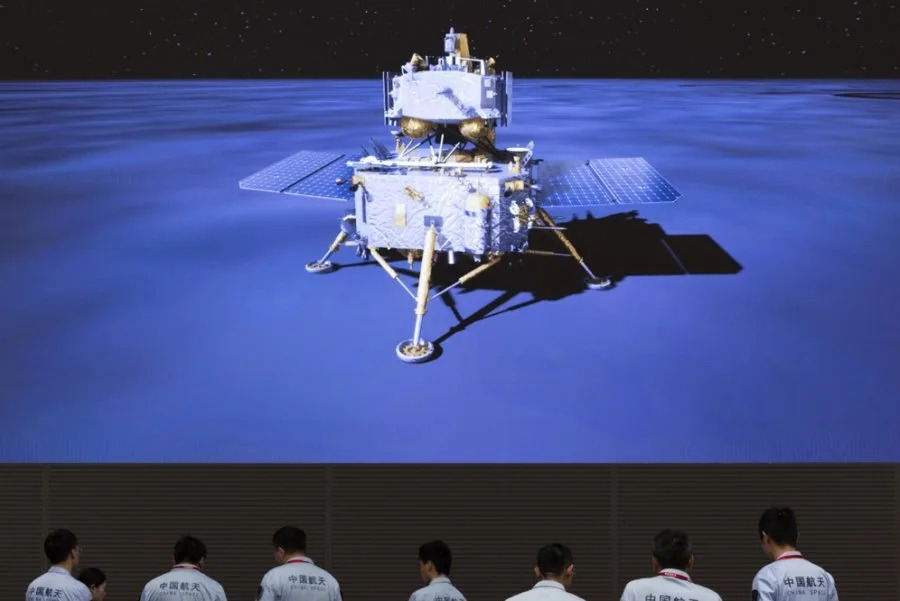Mark Moran
Mon, June 3, 2024

Technical personnel work at the Beijing Aerospace Control Center in Beijing, on Sunday. China's Chang'e 6 touched down on the far side of the moon and will collect samples from the surface. Photo by Jin Liwang/EPA-EFE
June 2 (UPI) -- After a month-long journey, a Chinese spacecraft has landed on the far side of the moon, the China National Space Administration said.
Chinese space administration officials have said they intend to collect rock and soil from this notoriously difficult-to-reach region of the lunar surface for the first time in history, the CNSA said.
"Everyone is very excited that we might get a look at these rocks no-one has ever seen before," Professor John Pernet-Fisher, who specializes in lunar geology at the University of Manchester, told the BBC.
"Applause erupted at the Beijing Aerospace Flight Control Center" when the Chang'e landing craft touched down on the Moon early on Sunday morning, the Chinese state broadcaster said.
Chinese space scientists landed the Chang'e 6 craft in a crater known as the Apollo Basin. "The choice was made for the Apollo Basin's potential value of scientific exploration, as well as the conditions of the landing area, including communication and telemetry conditions and the flatness of the terrain," said Huang Hao, a space expert from the China Aerospace Science and Technology Corp.
Huang said rugged terrain on the far side of the moon makes it harder to navigate than the front, or near, side, and has fewer flat surfaces that lend themselves to a successful landing. It also reduces the windows to communicate with the uncrewed craft.
The craft hovered about 300 feet above the moon's surface, scanning it with 3D technology before landing. Chinese space officials called the touchdown an "historic moment."
Chang'e 6 will now begin a three-day exploration of the lunar surface, gathering material as part of a mission that the CNSA said would include "many engineering innovations, high risks and great difficulty."
Most prominently, the Chang'e 6 will seek to extract some of the oldest known rocks to exist on the lunar south pole.
Pernet-Fisher said the chance to analyze rocks and other objects from a completely different part of the moon could answer fundamental questions about how planets form.
Most of the rocks collected so far are volcanic, similar to what we might find in Iceland or Hawaii, he said. But the material on the far side would have a different chemistry.
"It would help us answer those really big questions, like how are planets formed, why do crusts form, what is the origin of water in the solar system?" Pernet-Fisher said.
China is the only country to have ever landed a module on the back side of the moon, having done so the first time with its Chang'e 4 spacecraft in 2019.
No comments:
Post a Comment